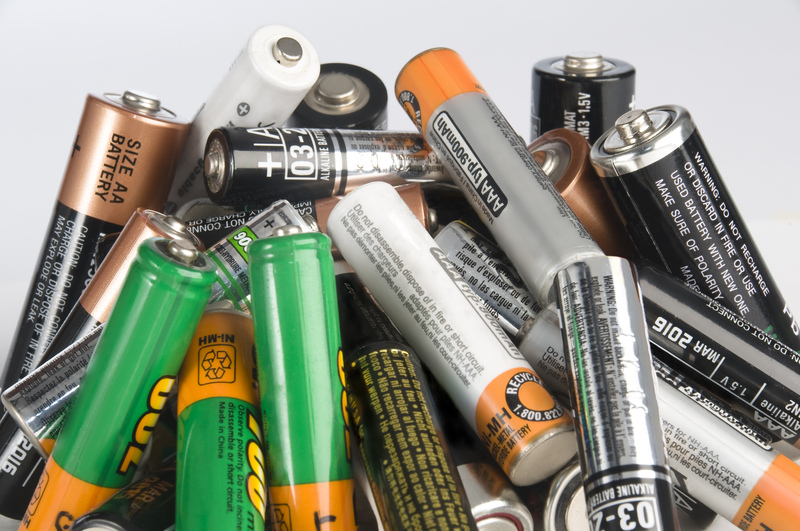What Everyone Should Know About PPE Waste Disposal
The rise in the use of personal protective equipment (PPE) has been one of the defining features of global health responses in recent years. Whether in hospitals, industries, or even households, single-use masks, gloves, face shields, gowns, and other protective items are now commonplace. While these items protect us from contagions and hazards, PPE waste disposal has become a major environmental concern. Mismanaged PPE waste can have severe social, health, and environmental consequences. This article will delve into the essentials of proper PPE waste management, offering a comprehensive and SEO-optimized guide for everyone.
What is PPE Waste?
Personal protective equipment (PPE) encompasses a range of items designed to guard individuals against exposure to hazardous substances, pathogens, or physical threats. Some common PPE materials include:
- Face masks (surgical, N95, cloth masks, etc.)
- Disposable gloves (latex, nitrile, vinyl)
- Face shields and goggles
- Protective gowns and coveralls
- Shoe covers
- Hair caps
While these items are indispensable, their widespread use, especially during outbreaks and pandemics, leads to a surge in PPE waste generation. Unlike regular waste, PPE waste is often contaminated and requires special handling.

Why is Proper PPE Waste Disposal Important?
The main risks associated with improper disposal of PPE waste include:
- Health Hazards: Infectious agents lingering on the PPE can infect waste handlers or the general public.
- Environmental Impact: Most PPE is made from plastics and synthetic fibers that do not biodegrade easily, leading to pollution.
- Wildlife Threat: Discarded masks and gloves can be mistaken as food or get entangled around animals, causing injury or death.
- Waste Management Challenges: Increased PPE usage burdens existing waste systems, especially in developing countries.
Therefore, understanding and applying the correct PPE waste management strategies is crucial for safeguarding health and the environment alike.
Types of PPE Waste and Their Classification
1. Contaminated vs. Non-Contaminated PPE
- Contaminated PPE: Used in healthcare settings or by individuals exposed to infectious agents. Must be treated as infectious waste.
- Non-Contaminated PPE: Used for general purposes, such as industrial or household cleaning, without exposure to dangerous pathogens. Usually classified as general waste.
2. Recyclable vs. Non-Recyclable PPE
- Recyclable: Some PPE, like certain face shields or items made of single-type plastic, can be recycled if sanitized.
- Non-Recyclable: Most single-use gloves, masks, and gowns; these mostly end up in landfills or incinerators.
_It's vital to correctly identify the type of PPE waste before disposal to ensure the right method is applied._
Best Practices for PPE Waste Disposal
1. Segregation at Source
Proper segregation is the foundation of effective PPE waste management. Always separate PPE waste from regular household or office waste. Use color-coded bins when possible:
- Yellow bins: For infectious and clinical PPE waste (common in hospitals and healthcare facilities).
- Red bins: For hazardous plastics and contaminated plastic waste.
- Blue/Black bins: For non-infectious or general waste PPE.
Clearly label bins intended for PPE collection to avoid cross-contamination.
2. Safe Handling and Storage
- Always wear gloves when handling used PPE items, even for domestic waste.
- Place PPE in a sealable plastic bag and close it tightly before depositing it in a bin.
- Do not touch your face or other objects after handling PPE waste until your hands are washed.
3. Disposal Procedures for Different Settings
Healthcare Facilities
- Follow institutional protocols for infectious waste handling. This usually involves double-bagging, labeling, and timely removal.
- An approved clinical waste disposal company should collect and treat the waste, usually by incineration or specialized treatment.
Households
- If someone is self-isolating or has an infection, store PPE items in a sealed bag for at least 72 hours before placing with the general waste, unless local regulations specify otherwise.
- Never flush masks or gloves down toilets, as they can clog plumbing and pollute water bodies.
Workplaces & Public Spaces
- Provide clearly labeled PPE waste disposal bins throughout the premises.
- Ensure regular collections and cleaning of bins to prevent overflow and contamination.
4. Sanitizing PPE Before Disposal
When feasible, lightly spray used PPE with disinfectant before placing it in a sealed bag, especially if it will be managed with household or municipal waste.
5. Training and Awareness
- Educate staff, family, or community members on how to distinguish and handle PPE waste safely.
- Use posters, labels, and training sessions to reinforce proper practices.
Environmental Impact of Poor PPE Waste Management
The improper disposal of PPE waste has led to a surge in plastic pollution, particularly in marine environments. Rivers, oceans, and urban landscapes are increasingly littered with discarded masks and gloves, threatening ecosystems and wildlife.
- Plastics in PPE: Most PPE products, like disposable masks/gloves, are made of polypropylene and polyethylene, non-biodegradable materials.
- Breakdown into Microplastics: Exposed to sunlight and friction, PPE breaks down into microplastics, entering food chains via fish and other aquatic organisms.
- Chemical Leaching: Some PPE items contain chemical additives that may leach into soils and waterways over time, harming plant and animal life.
_Reducing the environmental footprint starts with proper PPE waste disposal._
Legal and Regulatory Aspects of PPE Waste Disposal
International Guidelines
Organizations like World Health Organization (WHO), United States Centers for Disease Control and Prevention (CDC), and Environmental Protection Agency (EPA) offer clear protocols for different situations.
- Medical PPE is classified as infectious waste and must be segregated, stored, and disposed of through authorized channels.
- Workplaces must comply with local occupational safety standards, such as OSHA in the United States or HSE in the UK.
National and Local Regulations
Laws and regulations vary from country to country and sometimes even by city or municipality. Households and businesses are encouraged to consult local authorities for precise instructions on:
- Color-coding and bin requirements
- Schedule for hazardous waste collection
- Rules for PPE waste generated by COVID-19 patients or other infectious diseases
Compliance with these regulations not only avoids penalties but also contributes to public health and safety.
Can PPE Be Recycled? Understanding the Challenges
Most PPE waste is not easily recyclable due to contamination and the multiple materials used in their construction. However, some companies and researchers are working on innovative solutions to recycle or repurpose used PPE:
- Specialized Recycling Programs: Certain programs collect uncontaminated masks, gloves, or face shields and process them into construction materials, fuel, or other products.
- Research & Development: Innovations like pyrolysis can convert contaminated PPE plastic into crude oil or other usable substances.
For now, most individuals should assume that PPE waste should not be placed in regular recycling bins unless their area supports a dedicated PPE recycling program.
Reusables vs. Disposables: Reducing the Burden
- Opt for reusable PPE (e.g., cloth masks or washable gowns) when possible and safe.
- Follow strict decontamination protocols to ensure they remain effective and safe for repeat use.
Innovations and Future Directions in PPE Waste Management
The global surge in PPE use has stimulated innovations in eco-friendly material development and waste management.
- Biodegradable PPE: R&D is focused on plant-based bioplastics for masks and gloves.
- Incineration with Energy Recovery: Waste-to-energy plants safely break down contaminated PPE and generate electricity or heat as a byproduct.
- Public Collection Initiatives: City-wide collection points and awareness campaigns help reduce improper disposal in public spaces.
Tips for Individuals: How to Dispose of PPE at Home
- Use a dedicated bag or bin for used PPE.
- Tie bags securely before placing them in the general waste.
- Wash your hands thoroughly after handling PPE waste.
- Do not attempt to reuse single-use PPE.
Check with your local council about any specific disposal requirements for PPE.
Conclusion: The Collective Responsibility of PPE Waste Disposal
As PPE continues to be a part of our daily lives, it's everyone's responsibility to ensure that its use does not come at the cost of public health or the environment. Proper PPE waste disposal protects sanitation workers, reduces pollution, safeguards wildlife, and helps your community comply with regulations.
_Staying informed and adopting best practices can make a significant difference. So next time you take off that mask or glove, remember: safe, responsible, and eco-conscious disposal starts with you._

Frequently Asked Questions About PPE Waste Disposal
1. Can I recycle PPE waste at home?
Generally, no. PPE waste, especially if contaminated, should not be placed in your standard recycling bin unless there's a local program for PPE recycling.
2. What should I do if I see PPE littering public areas?
Report the litter to local authorities and, if safe, collect it using gloves and place it in a sealed bag for proper disposal.
3. How should companies dispose of large volumes of PPE waste?
Businesses and healthcare facilities must follow waste management protocols for hazardous and infectious waste, usually through authorized waste handling contractors.
4. Why can't PPE just be burnt in the open?
Open burning releases toxic gases and particulates. Only approved, controlled incinerators should be used for PPE waste to manage emissions safely.
Further Reading and Resources
- WHO - COVID-19 Masks Guidance
- CDC - Disposable Gloves Use and Disposal
- EPA - Disposal of Masks and Gloves
By arming ourselves with knowledge and acting responsibly, we can ensure that PPE continues to protect us--without harming our planet. Embrace smart PPE waste disposal today!